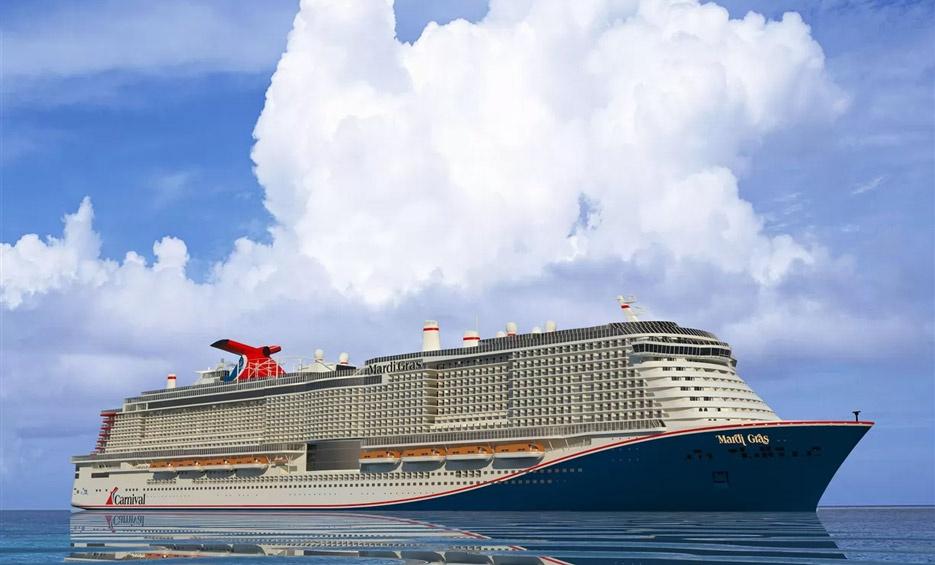There are a lot of topics related to efforts that the cruise industry is making to "go green" and while some such as banning straws and single-use plastics are easy... the fuel that runs these giant ships is not so clear. While there are currently no LNG or hybrid-powered ships planned for service on the West Coast, we are home to four environmentally sensitive areas that are playing a global leadership role in reducing greenhouse gas emissions on cruise ships. This includes Alaska, Hawaii, California, and British Columbia who led the way by mandating the use of scrubbers and are now progressing to improve on that as well.
Ultimately, that's one reason why West Coast cruises can be significantly more expensive than Caribbean ones, but personally, I feel like the effort and expense are positive ones.
How Cruise Ships Are Powered
Fundamentally, all cruise ships today burn fossil fuels in a diesel engine that generates electrical energy to power the ship. This electrical power then drives the propellers, lights, casino games, and even environmental systems such as desalinization, water treatment, and scrubbers.
Traditional Fuels
In the past, cruise ships, like freighters used Heavy Fuel Oil (HFO) because it is as much as 30% cheaper compared to alternatives. HFO - also referred to as bunker fuel in its lowest quality form - is terrible for the environment but it is:
- Cheap and plentiful
- Stable for transport and storage
- A readily available byproduct of petroleum refining
While California has mandated since 2009 that ships operating within its territorial waters use Marine Gas Oil (MGO) and scrubbers to further reduce emissions - the need to improve continues to accelerate. The cruise industry is now looking to the future for what will ultimately replace HFO as well as MGO.
The Complexity of Change
To add an additional layer of complexity:
- Unlike your personal automobile, which Americans typically keep for 4-7 years, a cruise ship can operate for 30-50 years if maintained properly
- The research and design phase for new cruise ships can take five or even more than 10 years before it finally floats out from the shipyard
- Technologies considered cutting-edge today might have only been a dream when the ship's design phase began
- Decisions on fuel types will impact the environment for decades to come
Emissions and Environmental Impact
One of the biggest issues with cruise ships - just as it is with cars - is the emission of Greenhouse Gases. These are compounds such as methane and carbon that ultimately help trap heat in the atmosphere and contribute to the warming trend that we refer to as "climate change."
Out here on the West Coast, we are privileged to have some of the world's most sensitive marine environments. This includes Alaska, Hawaii, and the Sea of Cortez. Unlike other parts of the world where the cruise industry has more leeway, Canada and the United States - California especially - are taking a leadership role in reducing emissions and making cruising more environmentally sustainable.
Reducing the Impact of Current Marine Fuels
While the industry works toward adopting alternative fuels, several interim solutions are being implemented to reduce the environmental impact of traditional marine fuels:
Emission Control Technologies
- Scrubbers: These systems capture sulfur oxides and other pollutants before they're released into the air. While they represent a significant investment (over $5 million per ship), many cruise lines installed them to comply with the 2020 UN mandate limiting sulfur emissions to 0.5%. However, some regions like Hawaii and California have banned scrubbers due to concerns about pollutants being discharged into the water.
- Selective Catalytic Reduction (SCR): These systems treat exhaust gases to reduce nitrogen oxide emissions by up to 90%.
- Advanced Engine Design: Modern marine engines incorporate design improvements that increase fuel efficiency and reduce emissions through better combustion control.
Operational Strategies
- Slow Steaming: Simply reducing cruising speed can significantly decrease fuel consumption and emissions.
- Optimized Itineraries: Planning routes to minimize distance traveled and take advantage of ocean currents reduces overall fuel needs.
- Shore Power Connection: When docked, ships can connect to the local electrical grid (where available) rather than running their engines, eliminating in-port emissions.
These technologies and strategies serve as a bridge while the industry transitions to cleaner alternative fuels like LNG, methanol, hydrogen, and eventually zero-emission solutions.
Alternative Fuels For Cruise Ships
Just like with the automotive industry, alternative fuel options is a hot topic for cruise ship designers. Let's explore the various options being developed and implemented:
LNG: Leading The Way
Many cruise lines are embracing Liquified Natural Gas (LNG) as a transitional fuel:
- Over 20 ships in operation or on order will be powered by LNG
- LNG reduces CO2 emissions by 20-30% compared to heavy fuel oil
- It virtually eliminates sulfur oxide emissions and significantly reduces particulate matter
- Carnival Corporation is going "all in" on LNG with nine different brands adopting this technology
- Carnival Mardi Gras will be the first LNG-powered ship in North America
LNG is extracted during petroleum and coal operations and then chilled to -260 degrees so that it can be transported in liquid form. It is safe to transport since the fuel can only burn when mixed with small amounts of air, and that also means the risk of spillage is less of an issue than oil in terms of water pollution.
However, LNG is not without its challenges. The biggest concern is methane slip - about 2% of methane does not burn during combustion and instead passes into the atmosphere. As a greenhouse gas, methane is approximately 30 times more potent in trapping atmospheric heat than CO2.
As Tom Strang, SVP of Maritime Affairs at Carnival Corporation notes, while methane is more potent, it stays in the air for about 12 years before breaking down, whereas carbon can stay there for thousands. When both gases are taken together, the overall savings in terms of Global Warming Potential is around 12-15% with LNG vs the 28% savings in carbon emissions alone.
Hydrogen Fuel Cells
Looking further into the future, hydrogen fuel cell technology offers promise for zero-emissions propulsion:
- Hydrogen produces only water vapor as a byproduct when used in fuel cells
- Viking Cruises has announced plans to incorporate hydrogen fuel cells in its new ships
- Several cruise lines are investing in research and development for this technology
The current challenges include hydrogen production, storage, and the lack of refueling infrastructure in most ports. Additionally, the costs remain prohibitively high for immediate widespread adoption.
Methanol as Marine Fuel
Methanol is gaining attention as another alternative fuel option:
- Dramatically reduces emissions compared to conventional fuels
- Simpler infrastructure than LNG (no need for pressurization or costly cryogenic fuel tanks)
- Can be produced from renewable sources as "green methanol"
The primary drawback is that fossil methanol actually increases total lifecycle greenhouse gas emissions by approximately 10% compared to MGO, while LNG reduces these emissions by 10-20%. For methanol to be truly sustainable, it must be produced from renewable sources.
Wind-Assisted Propulsion
In a surprising development, wind power is making a comeback in modern shipping with advanced technologies:
- Flettner Rotors: Large cylinders that spin on a vertical axis to create propulsion, with reported fuel savings up to 25%
- Rigid Sails: Modern wing-like structures that can help reduce carbon emissions
- Solar Sails: Hurtigruten Norway has unveiled designs for a zero-emission ship with retractable sails covered in solar panels (planned for 2030)
- Kite Systems: Flying ahead of vessels to help tow them, with potential fuel savings of 10-15%
Battery-Electric Systems
While fully electric propulsion remains limited to smaller vessels and shorter routes, hybrid systems are increasingly common:
- Hurtigruten launched the world's first hybrid ship in 2019
- They are now converting their entire expedition fleet to hybrid battery power
- Battery technology serves as an excellent complement to other propulsion methods
Shore Power: Reducing Emissions While in Port
One of the most effective ways cruise ships are reducing their environmental impact is through the use of shore power while docked. This technology, sometimes called "cold ironing," essentially allows cruise ships to turn off their engines while in port and connect to the local electrical grid instead.
All West Coast cruise terminals, including San Diego, Long Beach, Los Angeles, San Francisco, Seattle, and Vancouver now offer shore power support for one or multiple vessels at a time.
How Shore Power Works
Shore power is a remarkably simple concept with significant environmental benefits:
- When a cruise ship docks, it connects to the local electrical grid using specialized connection systems
- The ship can then turn off its diesel engines completely
- All onboard systems - from lights and air conditioning to refrigeration and guest amenities - are powered by the cleaner land-based electricity
- When it's time to depart, the ship disconnects and restarts its engines
Environmental Benefits
The environmental impact of shore power is substantial:
- Each cruise ship that plugs in can reduce diesel emissions by 80% and CO2 emissions by 66% on average
- During the 2023 season, cruise ships using shore power in Seattle alone avoided emitting 2,700 metric tons of greenhouse gases
- Shore power is particularly effective in places like Seattle where the electricity comes from low-carbon sources like hydropower
Current Status on the West Coast
West Coast ports have been leaders in shore power implementation:
- The Port of San Diego has offered shore power since 2010, making it one of the first in California to do so
- The Port of Seattle partnered with Holland America Group in 2004 to become the first port in the world to offer two shore power-enabled berths
- The trend toward universal shore power adoption is accelerating, with Seattle mandating that 100% of cruise vessels be shore power capable by 2027
What You Can Do To Reduce Your Footprint When Cruising
As someone who loves cruising, I recognize that global travel has a significant environmental impact.
However, it is refreshing that some of the world's best minds are hard at work developing solutions for today as well as tomorrow. I encourage you to do what you can in your personal life to reduce your footprint:
- Ask your travel agent to purchase carbon credits to offset your cruise and airfare
- Choose shore excursions that are environmentally responsible (hiking or kayaking instead of ATVs)
- Support cruise lines that are investing in cleaner propulsion technologies
- Share your environmental concerns with cruise lines - customer feedback drives change
Ultimately, the fuel being used is only one part of the equation, and most of the other elements are up to you. We'll talk more about those in the future!
Thanks for reading. We hope this was helpful!
Why stop now?
Participate In Our Polls | Ask or Answer A Cruise Question | Contact Heather to Book Your Next Cruise!

